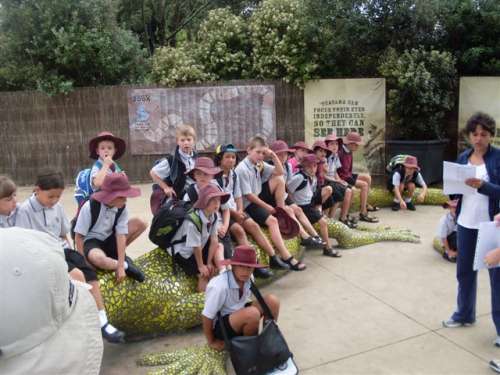 FAQs
FAQs
![]() Here are some frequently asked questions, but please feel free to contact us if you have any more.
Here are some frequently asked questions, but please feel free to contact us if you have any more.
MANZ (Montessori Aotearoa New Zealand) also has an excellent question and answer section.
The Information and Enrolment Booklet provides more comprehensive answers to all of these questions. You can download it here.

The children are enrolled at Howick Primary School. The Montessori Unit occupies 2 classrooms and all lessons are taught here. The unit uses all the school facilities (library, sports, play grounds etc) in the same way as all other classes. Howick Primary School is responsible for the enrolment of children to the Montessori unit.
The HPMA Trust oversees activities required to deliver Montessori education – including finance, resources and marketing. The teaching staff are responsible for delivering the curriculum (both State and Montessori) and all matters relating to the classroom.
Montessori defined the stages of development as 0 – 6 then 6 – 12. She based this on scientific studies that a child’s physiological development reaches a new stage at these ages. Socially, emotionally and academically a child will settle more effectively into a Montessori primary school at age 6.
Yes you can. Contact us to arrange an observation visit or come to one of our open days held in terms 1 and 3. See our Calendar for upcoming dates.
Children who attend a Montessori Primary school acquire many skills – independent learning, motivation to learn, ability to make personal choices and to take control of their work. All these skills enable them to pursue their next level of schooling with many advantages.
The Montessori Primary Curriculum is structured and very detailed. The prepared environment ensures that a wide variety of materials are accessible to the children. These materials are arranged in an attractive, sequential and progressive order. The children’s interest is piqued both by the materials presence and by seeing others work with the materials. The children then request a lesson and then may work with the desired, scientifically designed resources. Some lessons are planned for the children and taught in sequence as well, to ensure a healthy coverage of skills and topics. With freedom to choose comes responsibility and teachers ensure that children cover the required work areas by monitoring their work diaries and maintaining detailed records.
Individual learning plans are developed for each student. The teacher maintains comprehensive records of each child’s development and progress, based on ongoing and systematic observation. Children record the work that they complete in worksheets or work diaries on a daily basis.
Montessori believed that the inner drive of a child to learn was a stronger motivator than the drive to do well in tests and gain irrelevant rewards. The real reward of learning should be increased knowledge and job satisfaction. As part of the State Curriculum, children in the Montessori Unit are required to be assessed in relation to national standards in a similar way to other children at Howick Primary, but testing is kept to a minimum. This system also helps foster cooperation.
Most of the 3 hour work cycle focuses on the children working independently or with one or two others. Group work takes place mostly in subjects such as I.T., sports and music or in classroom discussions on topics such as Virtue Education.
Because children have individualised learning plans and work independently, they are able to progress at their own pace and complete work that is at their level. They are not pushed ahead too quickly or stifled and held back.
A mixed age group enables the older children to become role models and they can often be found teaching the younger children, thus reinforcing their own learning as well as playing a leadership role. In turn, the younger children seek guidance from the older children and see what can be achieved by them and are thus eager to learn more. This all helps develop a spirit of cooperation and empathy.
Maria Montessori was both a scientist and an educator and modern scientific research is now providing support for many of her theories. Take a look at the Resources Page which lists several websites and books and find out more about the "Science behind Montessori".
